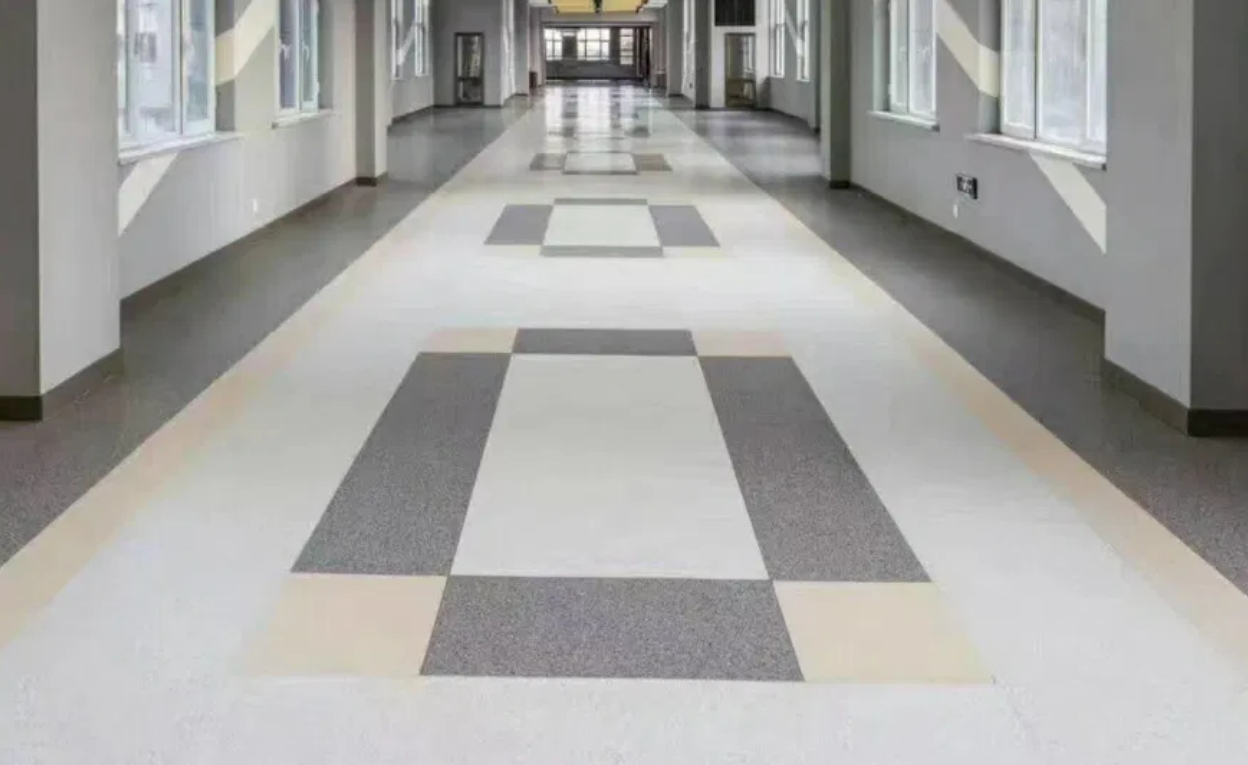When it comes to selecting the perfect flooring for your home or business, two popular options often come to mind: PVC flooring and vinyl flooring. Both offer durability, easy maintenance, and a range of design options, but they also have distinct characteristics that may make one more suitable for your needs than the other. Understanding these differences can help you make a well-informed decision. In this article, we’ll talk about what sets PVC flooring and vinyl flooring apart and discuss when you might opt for each.
Understanding PVC Flooring
Composition and Structure
PVC, or Polyvinyl Chloride, is a synthetic plastic polymer widely used in construction materials. PVC flooring, particularly the PVC flooring roll, is known for its flexibility, making it ideal for a variety of applications. This type of flooring is composed of several layers, including a PVC wear layer, a printed design layer, and a backing layer that provides stability.
Benefits of PVC Flooring
Versatility: PVC flooring roll is highly flexible and can be easily installed over various subfloor types, including concrete and plywood.
Water Resistance: PVC is naturally water-resistant, making it a good choice for areas prone to moisture, such as kitchens, bathrooms, and basements.
Easy Installation: The roll format allows for fewer seams and a smoother installation process, reducing the potential for dust and debris to accumulate.
Durability: With proper care, PVC flooring can last many years, thanks to its robust wear layer that protects against scratches and scuffs.
When to Choose PVC Flooring
PVC flooring is an excellent option when you need a resilient and versatile flooring solution. Its water resistance makes it perfect for wet areas, and its flexibility allows for easy installation over various surfaces. If you’re looking for a cost-effective solution with a quick installation process, the PVC flooring roll format provided by a reliable PVC flooring roll supplier might be your best bet.

Understanding Vinyl Flooring
Composition and Structure
Vinyl flooring is a broader category that includes various forms, such as vinyl sheets, tiles, and planks. Like PVC flooring, vinyl is also made from polyvinyl chloride (PVC), but it may include other materials and manufacturing processes that result in different types of vinyl flooring. Luxury Vinyl Tiles (LVT) and Luxury Vinyl Planks (LVP) are popular subcategories that mimic the look of wood or stone while offering enhanced durability and water resistance.
Benefits of Vinyl Flooring
Aesthetic Variety: Vinyl flooring comes in a vast range of colors, patterns, and textures. The high-quality printing technology used in LVT and LVP allows for highly realistic wood and stone looks.
Comfort and Insulation: Vinyl floors often have a softer underfoot feel compared to harder materials like ceramic tile or laminate. They can also provide better thermal insulation.
Maintenance: Vinyl floors are easy to clean and maintain, requiring only regular sweeping and occasional mopping.
Durability: High-quality vinyl flooring can withstand heavy foot traffic and is resistant to scratches, dents, and stains.
When to Choose Vinyl Flooring
Vinyl flooring is ideal if you prioritize aesthetic appeal and comfort. It’s suitable for any room in your home or commercial space, especially areas that benefit from a stylish, high-end appearance. Vinyl planks and tiles are excellent choices for living rooms, bedrooms, and retail spaces where both looks and comfort are important. Working with a reputable laminate flooring manufacturer can ensure you get vinyl options that meet your design and durability needs.
Comparing PVC and Vinyl Flooring
While both PVC and vinyl flooring share some common attributes, the key differences lie in their form, flexibility, and aesthetic options.
Form and Installation: PVC flooring often comes in rolls, which is beneficial for large areas that need seamless coverage. Vinyl flooring is available in multiple forms, such as sheets, tiles, and planks, providing more options for design and installation.
Flexibility and Use Cases: PVC flooring rolls are highly flexible, making them suitable for spaces with irregular layouts. Vinyl planks and tiles are stiffer and may require a smoother subfloor but offer more versatile design choices.
Aesthetics and Texture: Vinyl flooring, especially LVT and LVP, provides a broader range of realistic textures and appearances, closely mimicking natural materials like wood and stone.
Conclusion
Choosing between PVC flooring and vinyl flooring depends on your specific needs and preferences. For areas that require a quick and cost-effective solution with high flexibility, PVC flooring rolls from a trusted PVC flooring roll supplier are a great choice. On the other hand, if you seek a flooring option with extensive design possibilities and a luxurious feel, vinyl flooring from a professional laminate flooring manufacturer might be the way to go. Both types offer durability and ease of maintenance, so your decision should ultimately reflect your aesthetic preferences, budget, and functional requirements.





